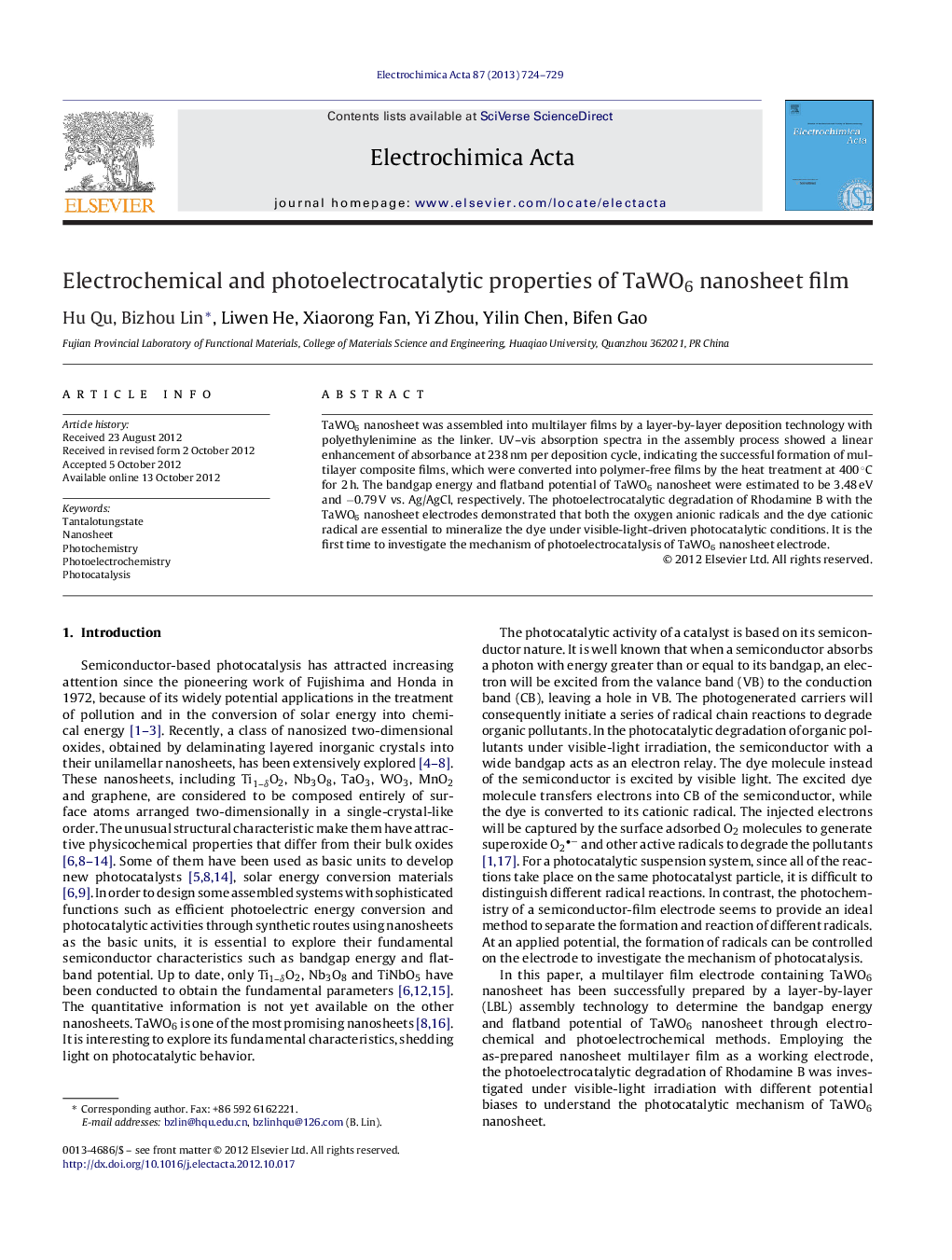| Article ID | Journal | Published Year | Pages | File Type |
|---|---|---|---|---|
| 188046 | Electrochimica Acta | 2013 | 6 Pages |
TaWO6 nanosheet was assembled into multilayer films by a layer-by-layer deposition technology with polyethylenimine as the linker. UV–vis absorption spectra in the assembly process showed a linear enhancement of absorbance at 238 nm per deposition cycle, indicating the successful formation of multilayer composite films, which were converted into polymer-free films by the heat treatment at 400 °C for 2 h. The bandgap energy and flatband potential of TaWO6 nanosheet were estimated to be 3.48 eV and −0.79 V vs. Ag/AgCl, respectively. The photoelectrocatalytic degradation of Rhodamine B with the TaWO6 nanosheet electrodes demonstrated that both the oxygen anionic radicals and the dye cationic radical are essential to mineralize the dye under visible-light-driven photocatalytic conditions. It is the first time to investigate the mechanism of photoelectrocatalysis of TaWO6 nanosheet electrode.
Graphical abstractFigure optionsDownload full-size imageDownload as PowerPoint slideHighlights► TaWO6 nanosheet multilayer films were fabricated through a LBL technology. ► The potential of TaWO6 nanosheet was determined to be −0.79 V vs. Ag/AgCl. ► The oxygen anionic radical is essential to mineralize the dye under visible light irradiation. ► An anode bias can suppress the rapid recombination of photogenerated charge carriers.
